Scooby Doo Where Are You? (1969)
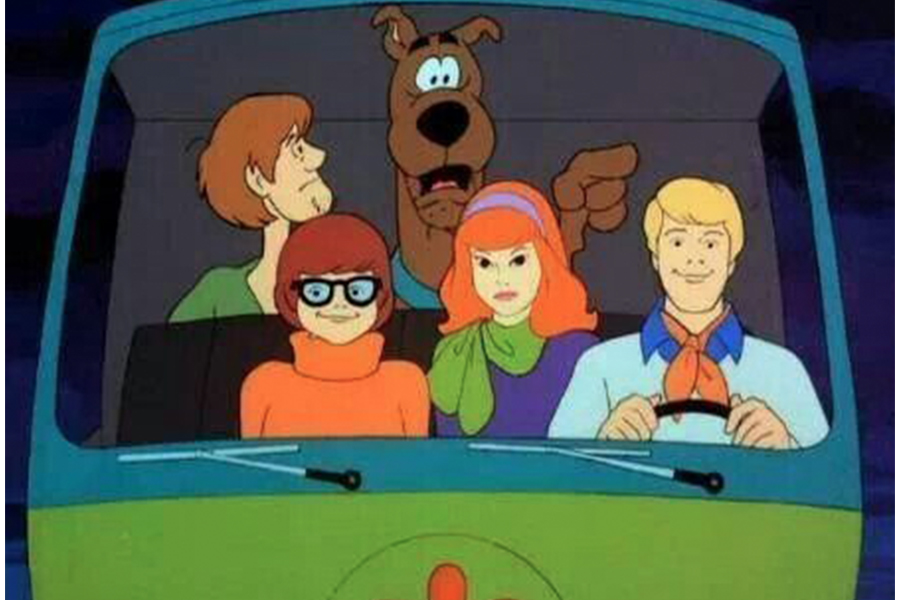
Scooby Doo, Where Are You? appeared on air in 1969, and while it only played for a couple of seasons, Scooby and the gang spawned years of new series -- not just about Fred, Velma, and the rest of those meddling kids, but even Scooby’s young nephew Scrappy. Eventually made into a live action feature length film, Scooby Doo and his teenage crew solved supernatural mysteries that usually ended with very human evil-doers behind them. Despite being the shows’ namesake, Scooby and his best friend Shaggy were generally hiding or looking for snacks when the ghosts appeared. Perhaps best of all was the quintessential hippy-mobile, The Mystery Machine, with its psychedelic paint job.
(image via Pinterest)
Tom and Jerry (1962)
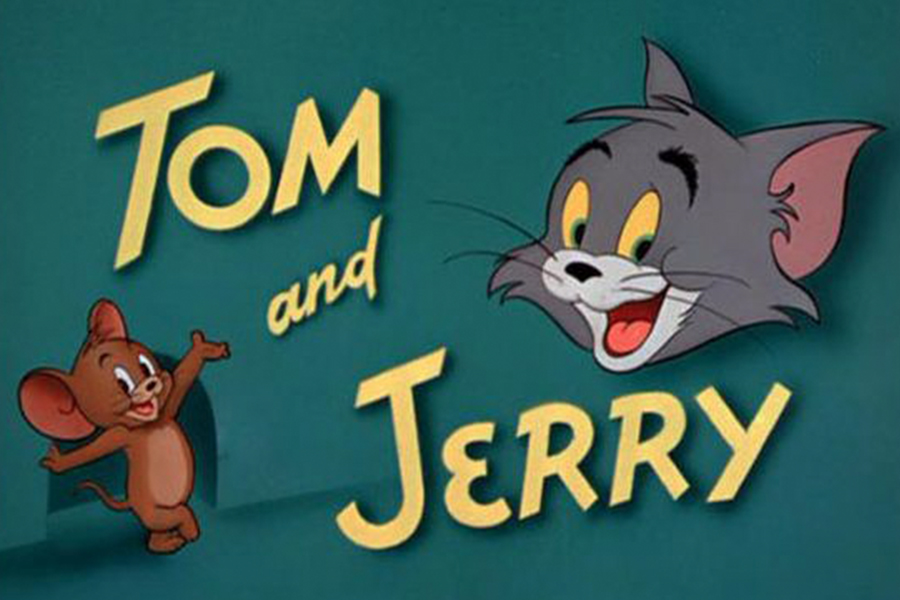
Tom and Jerry spent their episodes getting into scrapes as cat, Tom, attempted to swallow mouse, Jerry. The duo first appeared in a 1962 short, and the pair went through several incarnations (including a series depicting a close friendship between the two). Tom’s ineptitude, Jerry’s clever escapes and retribution, and the slapstick aura of the show even won over the Academy Awards, eventually leading to feature length films.
(image via Pinterest)
Popeye the Sailor (1960)

Popeye was the eponymous star of the show, accompanied by Olive Oyl, his hideous beloved. The sailor gave kids a strong message to eat their greens with his frequent indulgence of cans of spinach, which immediately made his muscles bulge, allowing him to save the day. Popeye was a Navy sailor, as evidenced by his World War II era uniform. While Popeye was originally released in 1933, the 1960 series retained popularity despite the simplicity of the animation.
(image via Facebook)
The Smurfs (1981)
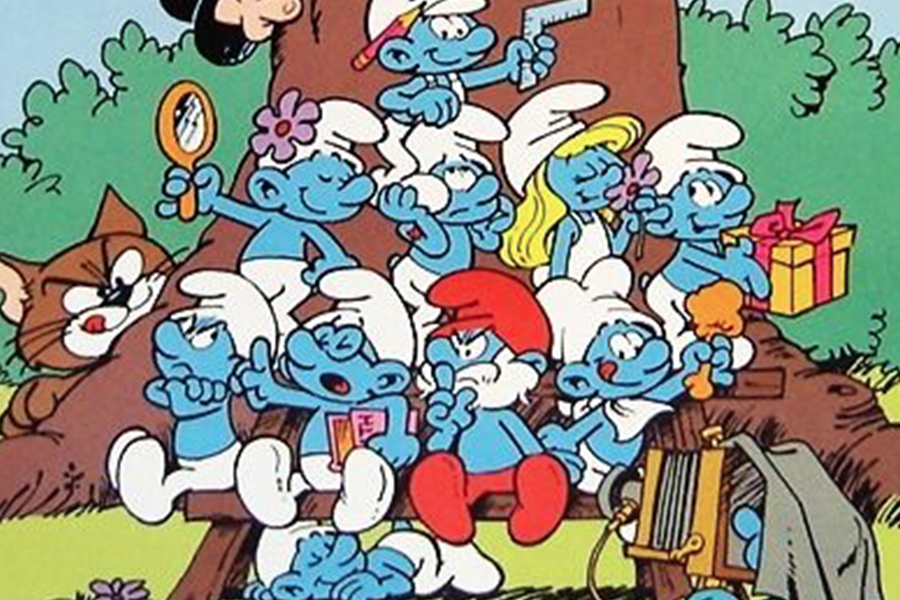
The Smurfs was a late cartoon classic, not appearing until 1981. Very different from many of the preceding cartoons, The Smurfs originated as a Belgian comic. Papa Smurf led his band of tiny blue men (and one girl) out of trouble as the wizard Gargamel and his villainous cat did their best to catch and destroy the whole clan. The show ran for almost a decade before massive changes turned viewers off.
(image via Pinterest)
The Pink Panther Show (1969)
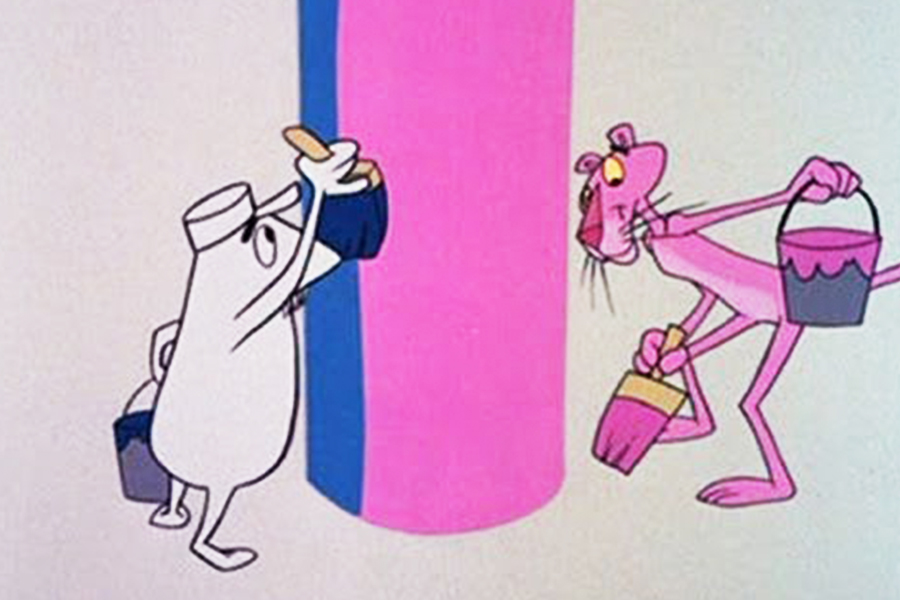
The Pink Panther Show was an animated series with a very different take from the live action films of the time. Although Inspector Clouseau, the films’ sleuth, made a few animated appearances, the Pink Panther was the star—a giant pink cat with an aristocratic air. Shows were generally split between the Pink Panther and the Inspector, as they dealt with a variety of mishaps and mysteries to be solved. The show went through almost dozen incarnations on different networks.
(image via Pinterest)
The Sylvester and Tweety Show (1976)

Sylvester and Tweety, the archetypal standard for cat and bird rivals, was a classic Warner Brothers cartoon that started in 1976. Episodes were variations on the lisping Sylvester trying desperately to make dinner of Tweety, the pet canary—generally to no avail. Sylvester and Tweety remain popular on reruns, t-shirts, and various accessories.
(image via Pinterest)
JabberJaw (1976)
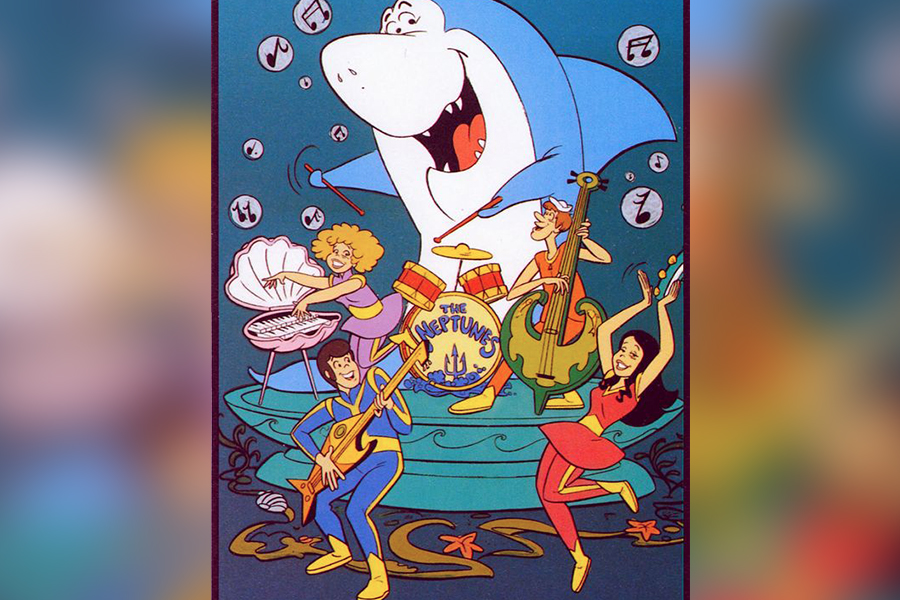
JabberJaw followed the underwater adventures of its shark namesake and the rest of his band. Appearing in 1976 and set in 2076, this Hanna-Barbera production appealed to the 70s era desire for a psychedelic future and fed the shark craze stirred up by Jaws. The show followed the format of the times, complete with laugh track and bad puns.
(image via Pinterest)
The Bugs Bunny/Looney Tunes Comedy Hour (1985)
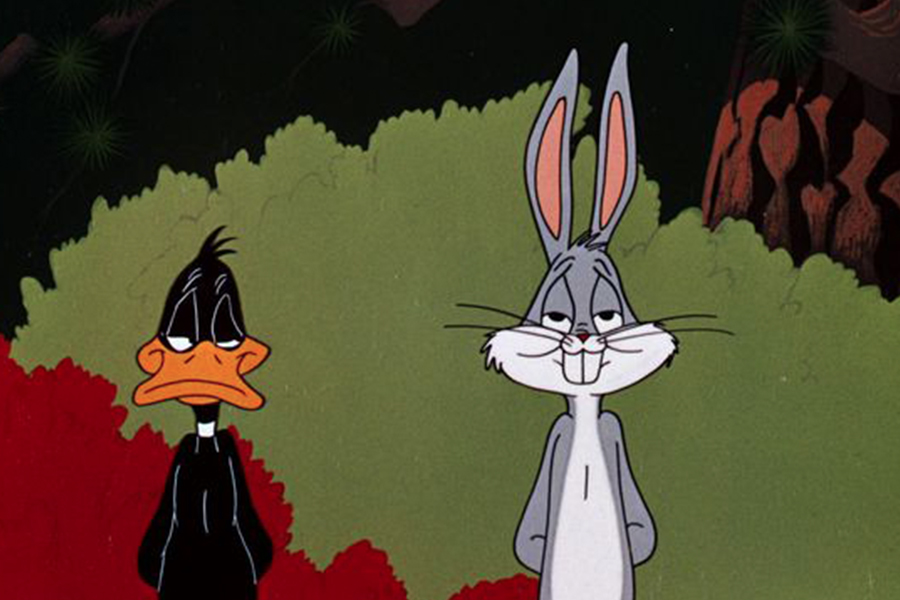
Mel Blanc was the voice of Bugs Bunny—as well as a number of other characters in the Looney Tunes crew. This 1985 series gathered up favorites of the Looney Tunes, creating a sort of anthology of 20 years worth of cartoons. Although it morphed into The Bugs Bunny and Tweety Show by the next year, it still gave a new generation a look into classic cartoons.
(image via Pinterest)
The Road Runner Show (1966)
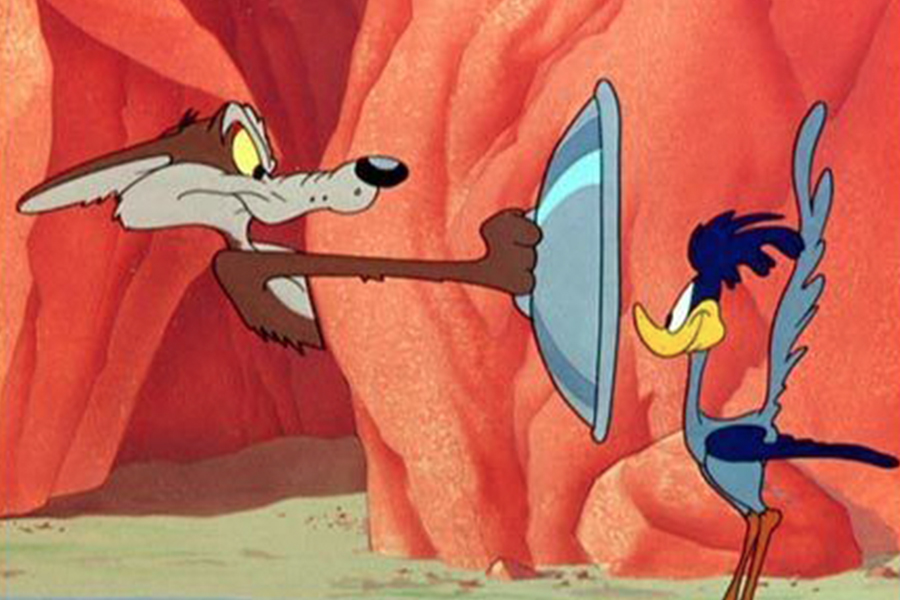
The Road Runner Show was another slapstick favorite of the era, starting in 1966. The Road Runner himself was a desert dwelling speed demon, but that didn’t stop Wile E. Coyote from trying everything he could to bring the bird to the end of the road. Invariably, Wile E.’s ideas were considerably less genius than he believed, and the Road Runner escaped his ACME Corporation traps. The sheer genius of the show itself was the ability to continue coming up with failed attempts on the part of Wile E., along with its extremely limited dialogue.
(image via Pinterest)
The Woody Woodpecker Show (1957)
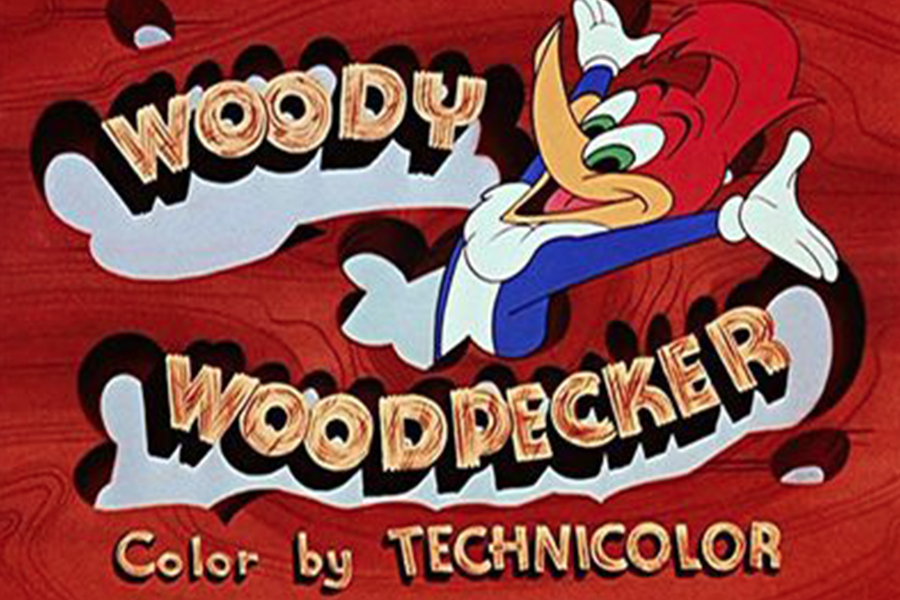
Woody Woodpecker and his animated pals were part of another series from the animation golden age. Admittedly, the show originated as a Thursday afternoon cartoon, but eventually made it to Saturday mornings. Between Woody, Andy and Miranda Panda, Chilly Willy's adventures, live action scenes and newsreels added a unique twist.
(image via Pinterest)
Goober and the Ghost Chasers (1973)

Goober and the Ghost Chasers (1973) followed the adventures of Goober, a dog who could turn invisible, and his buddies who solved supernatural mysteries. Despite the suspicious similarity to Scooby Doo, Goober made it through two years before being included in the 1977 Fred Flintstone and Friends. Aside from the invisible Afghan hound and his daring Ghost Chasers, the Partridge Family kids made both animated and vocal appearances on more than half the episodes.
(image via Pinterest)
The Huckleberry Hound Show (1958)

Huckleberry was a blue hound (spoiler alert) with a penchant for science, soldiering, singing, and investigation. The show was Hanna-Barbera’s second studio production, first airing in 1958, and the hound shared his airtime with Yogi Bear and with Pixie and Dixie and Mr. Jinks. Although Yogi eventually out-popularized Huckleberry, it still managed to give an air of legitimization to the studio and especially to the animation style, eventually becoming the first cartoon series to win an Emmy.
(image via Pinterest)
The Yogi Bear Show (1961)
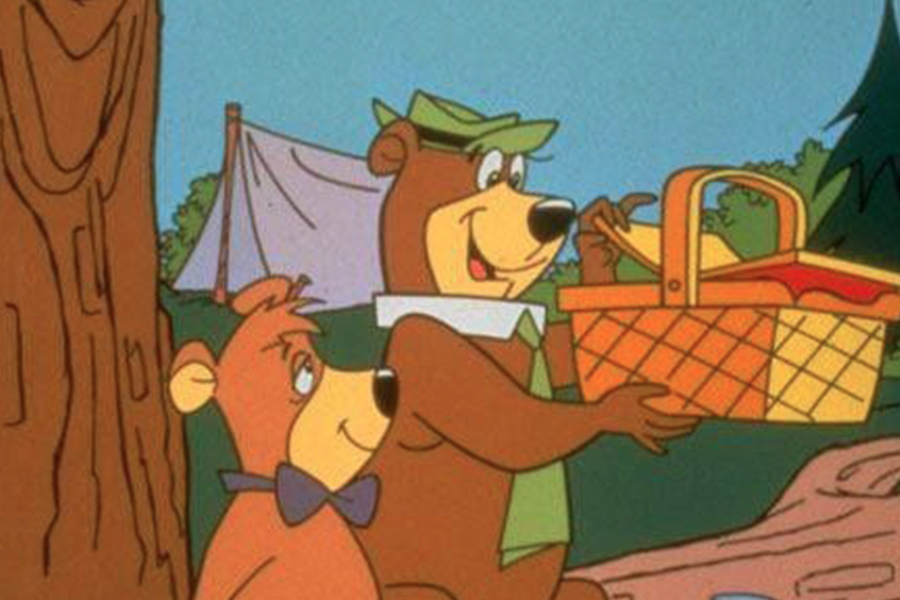
The Yogi Bear Show broke away from its segment in The Huckleberry Hound Show to become its own series in 1961. Based in “Jellystone” National Park, Yogi and his little buddy Boo Boo spent most of their time snatching food from unwary campers, despite the park ranger’s best efforts. The show also included segments featuring Snagglepuss, a mountain lion, and Yakky Doodle, a duck. Yogi himself spawned more than a dozen spin offs, movies, and TV specials.
(image via Pinterest)
The Magilla Gorilla Show (1964)
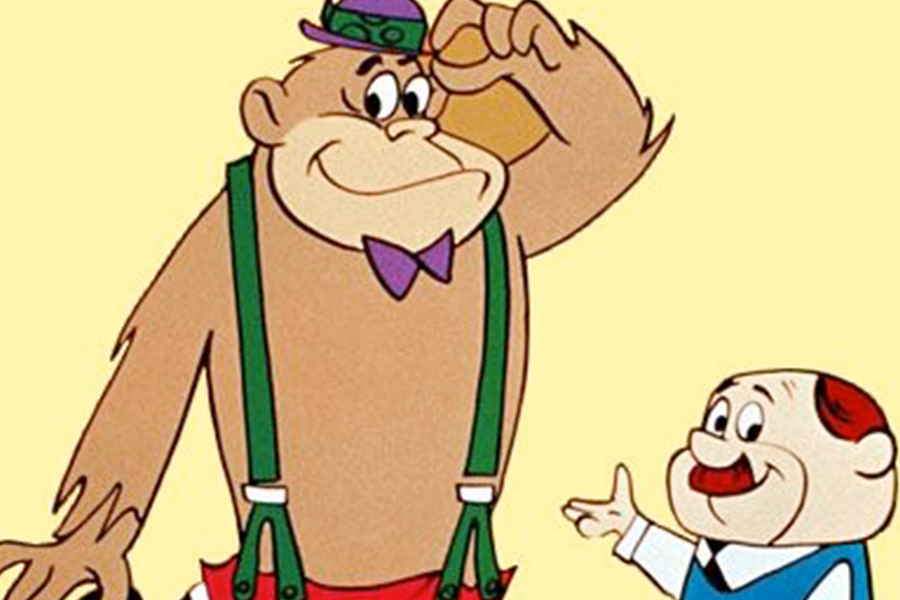
Magilla Gorilla made his TV debut in 1964 and spent much of his air time sitting in a pet store window, eating bananas and waiting to be bought. No matter how many times the pet shop owner marks him down, he keeps winding back up at the shop to "try again next week." Other segments in the show included Punkin' Puss and Mushmouse and Ricochet Rabbit & Droop-a-Long. Despite his pet store status, Magilla maintained a debonair derby hat, suspenders, and bow tie at all times.
(image via Pinterest)
Wacky Races (1968)

Inspired by The Great Race, Wacky Races came out in 1968. The show featured 11 cars competing to win World's Wackiest Racer. Each episode showed the outcome of two races and was complete with a mustachioed villain whose evil plans always ended up in shambles.
(image via Pinterest)
Dastardly and Muttley in Their Flying Machines (1969)

In 1969, in the middle of Wacky Races, Dastardly and his sidekick dog Muttley got their own series. A combination of Snoopy's Red Baron, Wacky Races, and Those Magnificent Men and Their Flying Machines, Dastardly and Muttley spent their episodes trying to stop Yankee Doodle Pigeon, a carrier pigeon. Voice actors Paul Winchell and Messick were the voices of every character in the series.
(image via Pinterest)
The Flintstones (1960)
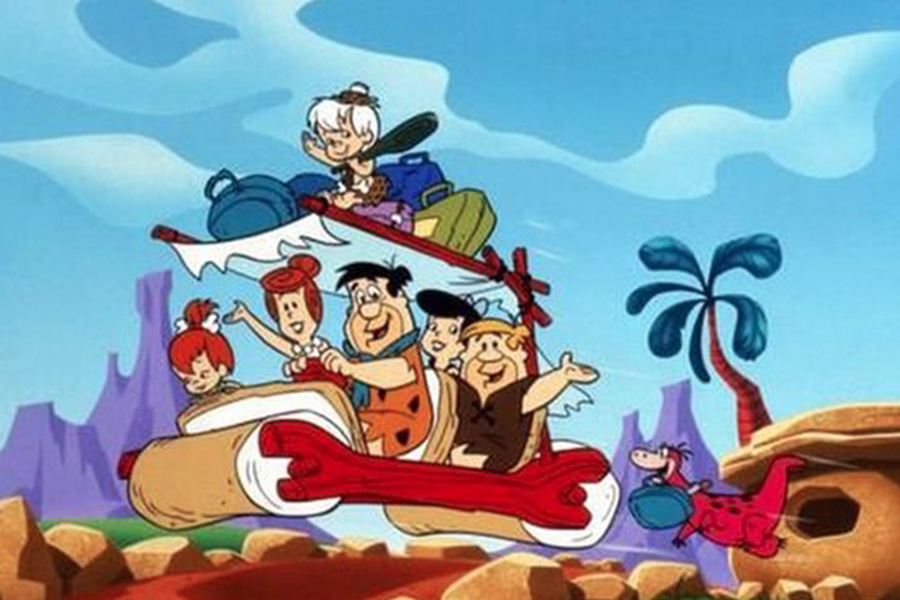
The Flintstones premiered in 1960 with a modern spin on a stone age family. Fred, Wilma, and the kids drove foot-pedaled cars with stone wheels and kept a prehistoric animal as a garbage disposal. This combination of new "technology" done with stone age means was the biggest pull of the show.
(image via Pinterest)
The Jetsons (1962)
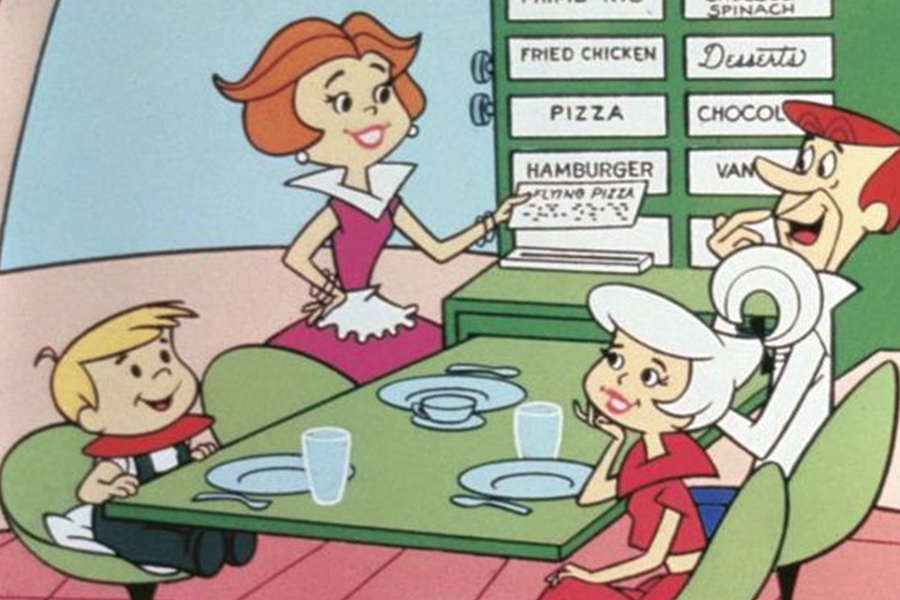
The Jetsons was the 1962 polar opposite of The Flintstones. Set in the far future, George, Jane, Judy, and Elroy live with their talking dog Astro and robot maid Rosie with a largely 1960s nuclear family mindset. Between holograms and flying cars, the Jetsons were the future everyone hoped for, despite minimal societal evolution.
(image via Pinterest)
Top Cat (1961)
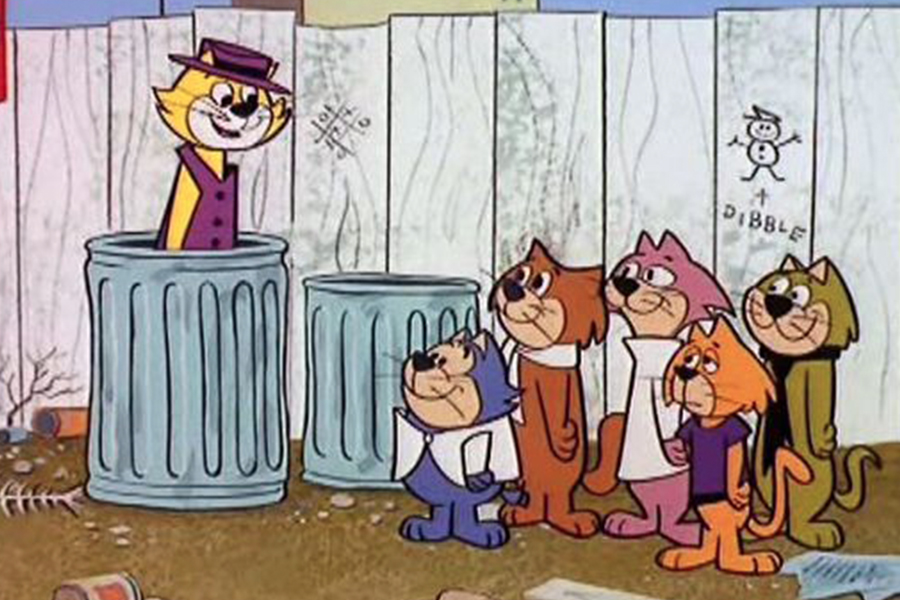
Top Cat aired in 1961, following the adventures of T.C. (Top Cat) and his gang of cats in Manhattan. Despite the goofy alley cats' antics as they try to pull cons and make a few bucks, there is also a level of social commentary to be found. No matter how hard the cats try to make it out of their alley, The Man in the form of a policeman is always there to keep them down.
(image via Pinterest)
Jonny Quest (1964)
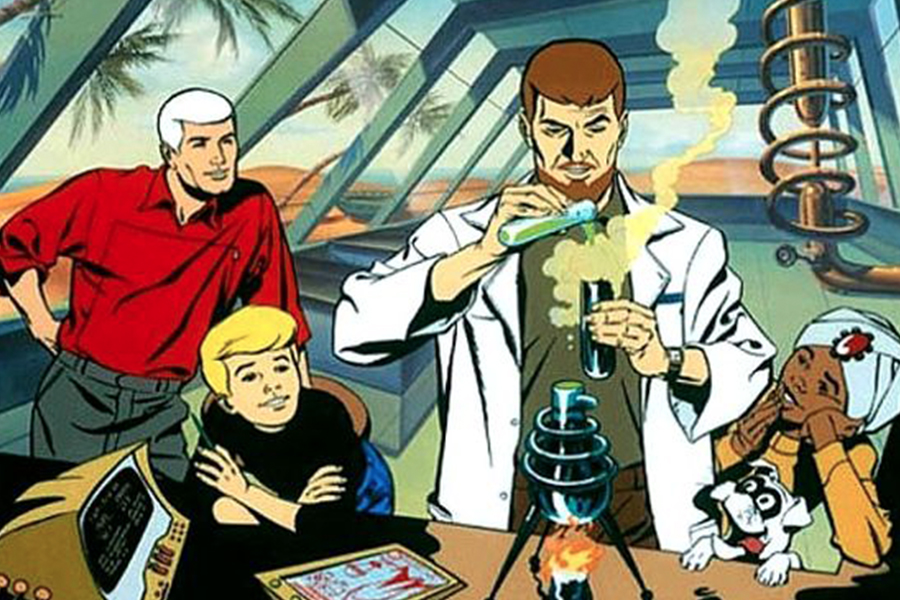
When Jonny Quest first appeared in 1964, the animation style was significantly different from Hanna-Barbera's previous animated series. Jonny Quest is a young boy who tags along with his father, a brilliant scientist, on all manner of quests. In addition to a more realistic style, Jonny Quest was also one of the first action-adventure animation series.
(image via Pinterest)
Josie and the Pussycats (1970)

The 1970 series Josie and the Pussycats was a cartoon based on an Archie comic book series. Josie and her girlfriends are rockstars, and their music was part of the fun of the show. Also important was Valerie, the first African American woman to make it into a Saturday morning animated series with any regularity.
(image via Pinterest)
The Funky Phantom (1971)

The Funky Phantom was a delightful mixture of 70s grooviness and good old American patriotism. Lasting less than two dozen episodes, the show revolved around three teenagers in a dune buggy who stumble upon a Revolutionary War veteran and his cat, who hid from Redcoats in a clock and came out 200 years later as ghosts. The pair provide unseen help to their three real cohorts through a series of mysteries. The Funky Phantom was one of the first animated series to include a laugh track.
(image via Pinterest)
Sabrina the Teenage Witch (1971)
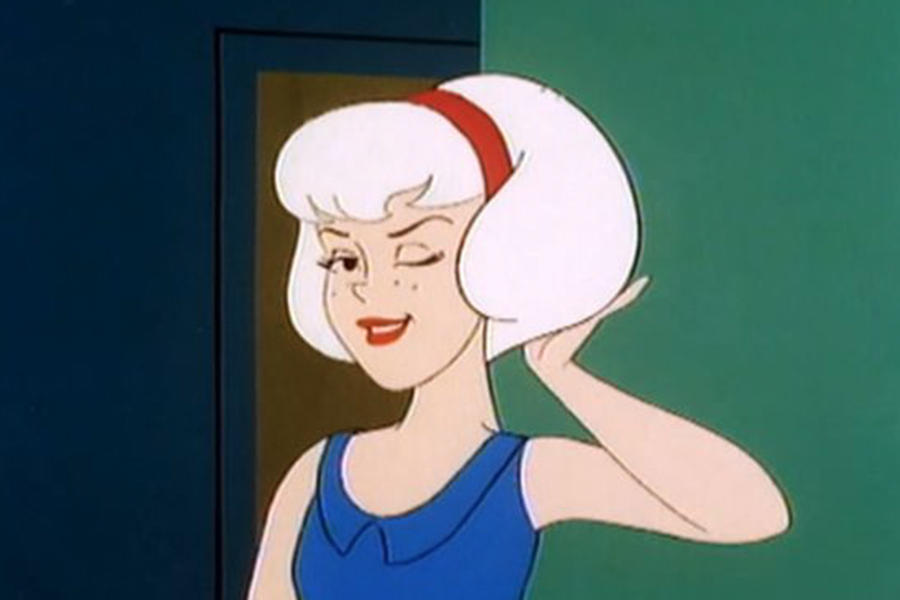
Sabrina the Teenage Witch was a 1971 animated series based on an Archie comic series. Sabrina discovers she has magical powers and tries to navigate adolescence and her newfound witchery at the same time. One of the first of its kind, it gave little girls everywhere magical ideas.
(image via Pinterest)
Teenage Mutant Ninja Turtles (1987)
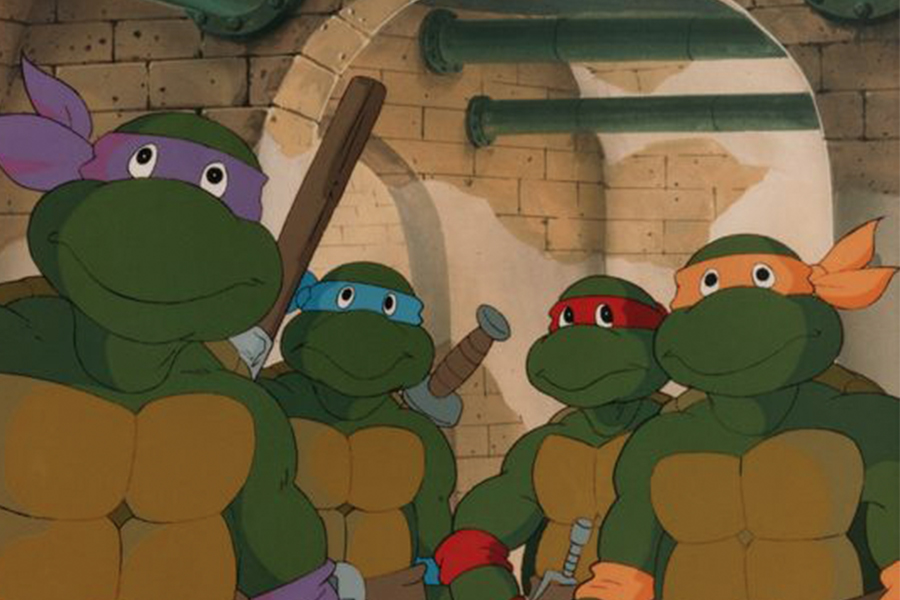
TMNT premiered in 1987, starting as a miniseries and turning into a full-blown Saturday morning 80s craze in. Based on a comic series, TMNT was a lighter retelling of the story of four pet store turtles who get covered in sewer ooze, turn into human-turtle hybrids, and learn the ways of ninja-hood by the human-rat hybrid Master Splinter. TMNT 87 eventually evolved into full-length films and live-action productions, carrying much of the comic popularity of other superhero sagas.
(image via Pinterest)
George of the Jungle (1967)

Produced by the creators of Rocky and Bullwinkle, George of the Jungle was a 1967 series inspired by Tarzan. Contrary to the efficient Tarzan, George is a doofy ape man who spends his time saving the denizens of the jungle from harm.
(image via Pinterest)
The Adventures of Rocky and Bullwinkle and Friends (1959)
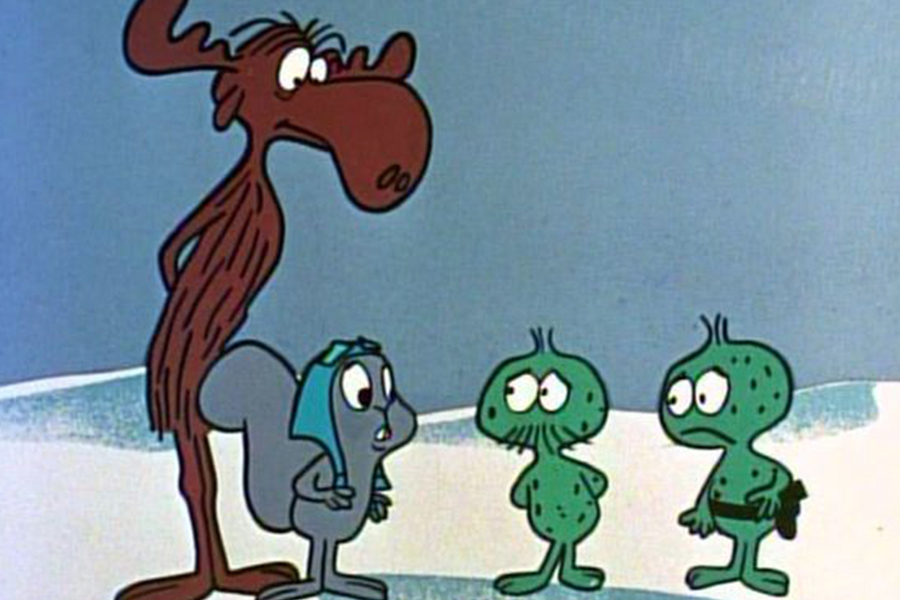
Rocky and Bullwinkle actually went through a series of series between '59 and '64, taking turns being the titular character. Rocky was a flying squirrel, Bullwinkle a moose with very little brains; their nemeses of the time were Natasha and Boris (appropriate for a time when feelings towards the Russians were less than friendly). The Adventures of Rocky and Bullwinkle was known for its satire and puns, and managed to be enjoyable for adults as well.
(image via Pinterest)
DuckTales (1987)
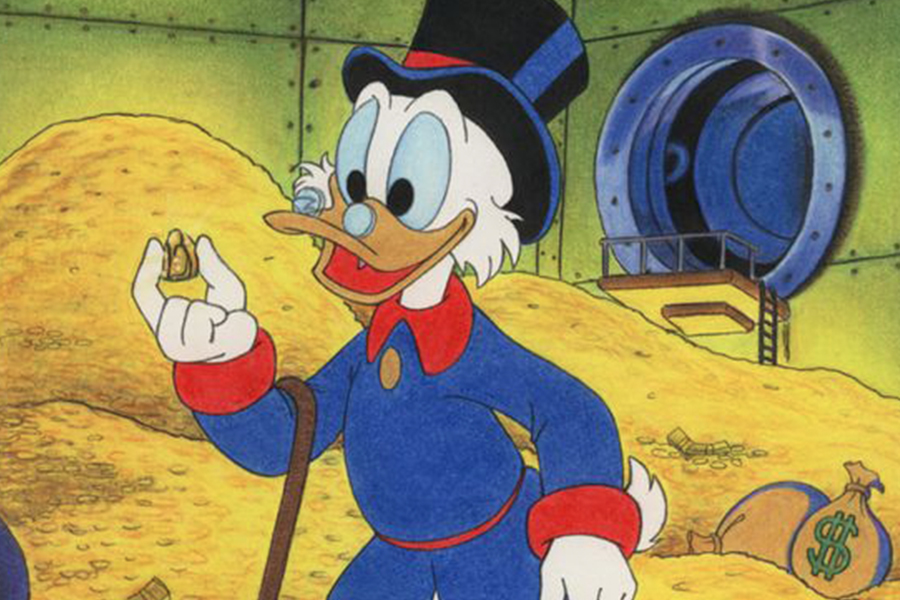
DuckTales appealed to a much later audience, first appearing in 1987. Scrooge McDuck, his three nephews, and their friends wind up on all manner of adventures, most of which Scrooge expects will win him more treasure than he already has. DuckTales was one of the first animated Disney series hits, eventually launching Darkwing Duck and few films and video games.
(image via Pinterest)
Thundercats (1985)
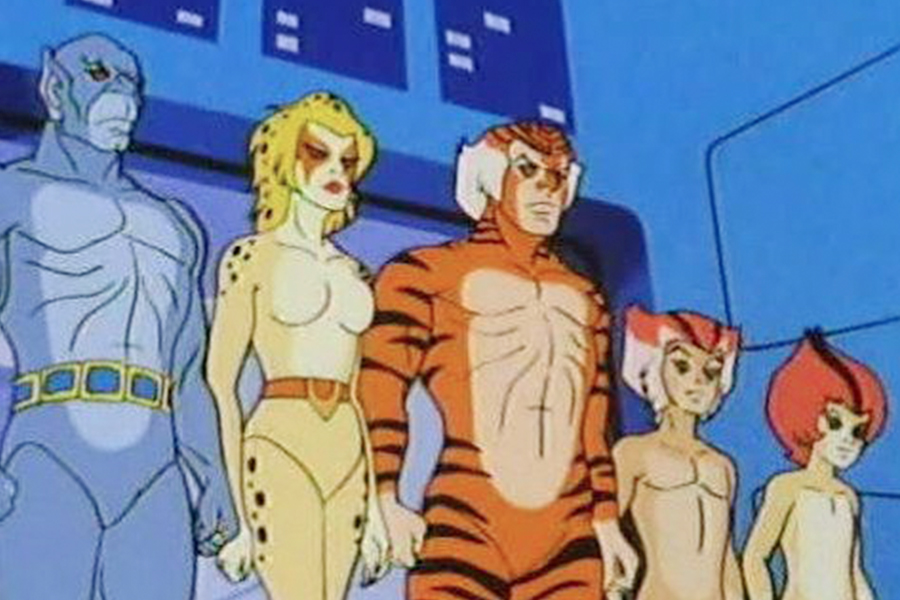
Thundercats was the 1985 sci-fi animated series about a group of feline-humanoid-alien creatures who escape their dying planet, eventually landing on Third Earth after years in a spaceship. After the first season, the film Thundercats - HO! premiered, and the following seasons were altered slightly to carry on from the movie. Despite its reception at the time, 20 years later, Thundercat projects received little interest.
(image via Pinterest)
Speed Buggy (1972)
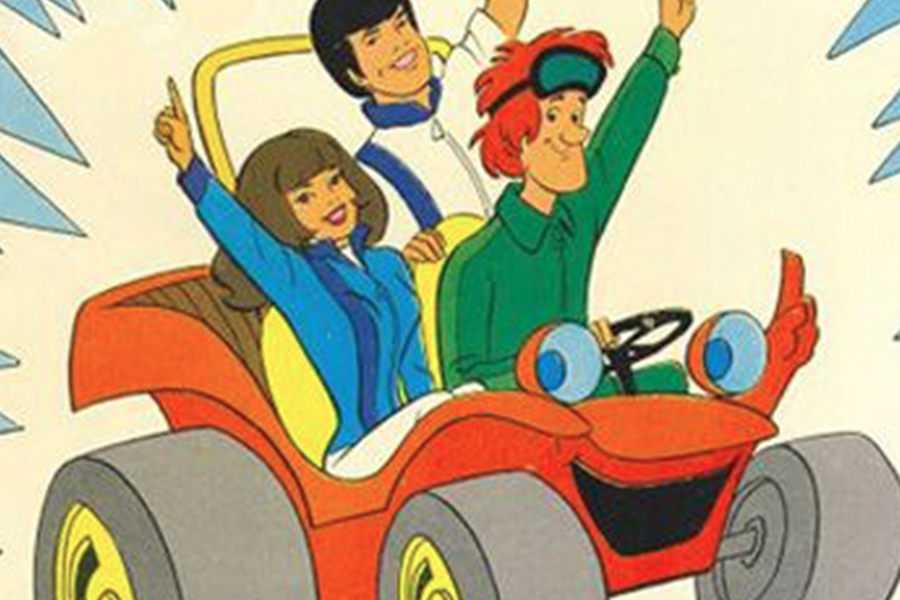
Speed Buggy spent a year on the Saturday morning lineup in 1972. Three teenagers and a talking dune buggy win races and solve mysteries. Despite its short life, it was frequently on rerun, which led to its limited popularity; much of the population found it to be wildly redundant for the era.
(image via Pinterest)
Mighty Mouse (1942)
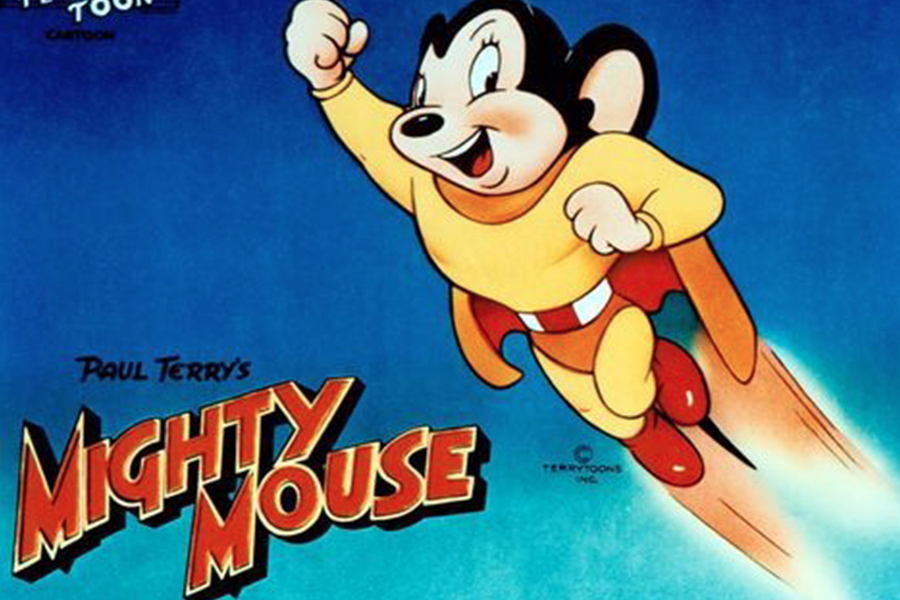
First appearing in 1942, Super Mouse eventually became Mighty Mouse, who made 80 flicks in less than 20 years. Starting as The Mighty Mouse Playhouse, the series eventually evolved into The New Adventures of Mighty Mouse, and then Mighty Mouse, the New Adventures. Mighty Mouse was strong, invincible, and could fly, and much of the dialogue mimicked operatic structure as he superpowered his way through episodal issues.
(image via Pinterest)
 Author
Sherrill Dean
Last Updated: October 24, 2025
Author
Sherrill Dean
Last Updated: October 24, 2025